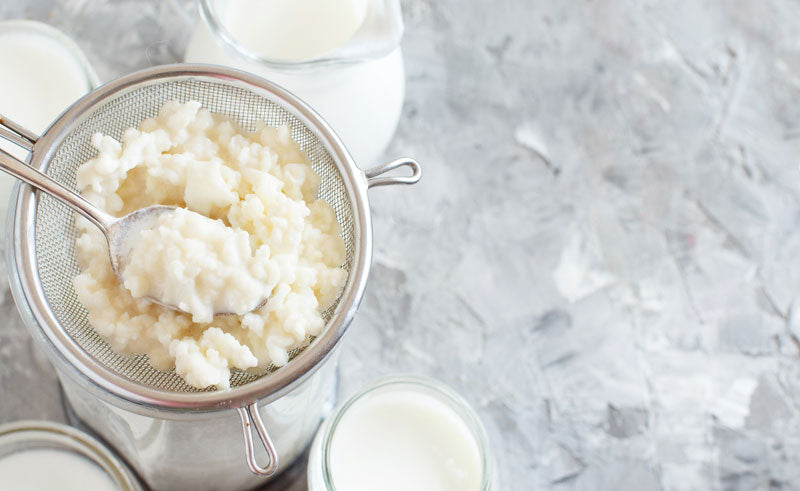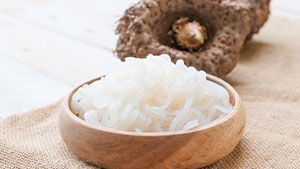It’s impossible to ignore the microbiota phenomenon. Boosting good bacteria, reducing the impact of bad ones… Taking care of your microbiota is important, that’s why.
Imagine a world with its leaders, its rules, its good guys, its bad guys, its communication systems. A world that lives in and on our organism. Welcome to the world of the microscopic microbiota! From the infinitely small, from bacteria to fungi, including other equally fun microorganisms. The microbiota is everywhere in our body…. For our greater good!
Two key figures to better understand its importance:
- 1 to 2 kilos, this is the average weight of the microbiota in adults
- 10,000 billion is the number of bacteria in our intestines.
There is not one microbiota but several microbiotas
Thanks to the huge success of the book "The discreet charm of the intestine" by Giulia Enders, we have all heard of this essential but often forgotten organ, the intestine! But besides the intestinal microbiota , the undisputed star of all microbiotas, there are others that are increasingly being talked about. For example, the skin microbiota : responsible on its own for redness, premature signs of aging and even juvenile or late acne! But do you know the importance of the scalp microbiota, oily roots, dry ends, does that ring a bell? But also that of the vagina... A disruption of its microbiota would explain, for example, the occurrence of mycoses and other very odorous and very unpleasant vaginal candidiasis. In the family of microbiotas, there is also the oral microbiota (from cavities to gingivitis...), the mouth being the first gateway into the body. In short, from the scalp to the armpits, the microbiota is everywhere!
The undisputed star is the intestinal microbiota
Since researchers have been looking into the intestinal microbiota, new avenues of research have opened up on many pathologies that are more or less distant from the stomach. Can't lose weight? Are you depressed? Are you thirty and still covered in spots? It could all be at the level of your intestine. How is this possible? Thanks to the brain-intestine link. Researchers have built a bridge between these two key organs of the body that communicate via a highly sophisticated system through the vagus nerve (which is also increasingly being talked about), the immune system and the production of certain neurotransmitters (dopamine, serotonin). In short, the brain and intestines send each other text messages all day long. "How are you? Yes, great" in the case of a top-notch microbiota. "Meh, meh this morning, our host is doing whatever he wants" in the case of dysbiosis (when the microbiota is altered). And the health results are not long in coming: from great fatigue to mild diarrhea to bloating, nothing is going well in our little belly. Moreover, since 1999 and the work of a certain Michael Gershon, neuro-gastroenterologist at Columbia University (New York), we have been talking about the belly as "a second brain."
In short, today researchers are studying the very close links between certain diseases and the microbiota . In addition to diabetes and obesity, the scope of action is quite broad. From so-called degenerative diseases (such as Parkinson's and Alzheimer's) to autoimmune diseases (such as multiple sclerosis) or other diseases that at first glance have nothing to do with the intestines, such as autism. We are therefore increasingly talking about the microbiota to cure certain diseases, or prevent them.
The key role of bacteria in the intestines
But what do the 10,000 billion bacteria located in the small intestine and colon make? First, it seems logical, they facilitate digestion by a well-oiled mechanism. The bacteria ferment certain fibers in the food bolus. This fermentation produces fatty acids (propionate or butyrate type) which serve as food for the cells of the colon, then as energy for the body. Thank you bacteria!
But in addition to "simple" digestion, which is already a factory in itself, the microbiota also plays other fundamental roles. It protects the body from unsavory bacteria through the barrier effect. In short, without a "Microbiota Health Pass", move along, you don't get in. Because, yes, the microbiota watches over the immune system of the entire body (and quickly warns the brain in the event of an unwelcome intrusion).
How to keep your microbiota in good shape?
First of all, you have to feed the beast (or rather the beasts) well. To do this, we rely on prebiotics and probiotics and other words ending in "ticks".

A prebiotic
A prebiotic is a food ingredient that is not digestible by us (for example, non-digestible fibers, fructo-oligosaccharides, etc.) that stimulates certain bacteria. In short, it is food for bacteria. Fruits, vegetables and legumes are full of them.
A probiotic
A probiotic is a micro-organism (bacteria, yeast, etc.) capable of rebalancing the flora of an ecosystem such as that of the intestines for example. A certain quantity is still required. This is what we usually call "good bacteria". The best-known probiotics are lactobacillus and bifidus. They are found in yogurts and fermented foods (sauerkraut, kefir, kombucha ) but also vinegar, pickles, miso soup.
A postbiotic
A postbiotic is a waste product of probiotics, which creates an environment favorable to the growth of good bacteria, a bit like soil for plants.
A symbiotic
A synbiotic is a combination of a probiotic and a prebiotic (in food supplements , for example).
Supplementation side
In terms of supplementation, plan probiotic cures to be consumed preferably in the morning on an empty stomach (and away from drinking a hot drink). For the record, here are the names of the bacteria that will reseed the intestine: Lactobacillus (L. for short) and Bifidobacterium (B. for short): L. casei (defensis), L. acidophilus , L. gasseri , L. rhamnosus , B. lactis (B. regularis), B. bifidum (bifidus), B. longum , B. breve , B. animalis and B. humanis . Note that each family of bacteria has its specificities. For example, against diarrhea, take Saccharomyces boulardii or Lactobacillus reuteri. Against eczema, again Lactobacillus reuteri . Against allergies, Lactobacillus caseii . If you are at a loss, the best thing to do is to ask your pharmacist for advice.
When to supplement?
After chemotherapy treatment, after taking antibiotics (moreover, it is recommended to accompany the treatment with the taking of probiotics such as Ultralevure® or Lactibiane®), but also if you often have "stomach aches" and are subject to intestinal discomfort, if you are often sick (from a minor cold to gastroenteritis) or if you have difficulty losing weight.
Towards a microbiotic diet?





On the food side, some foods are very microbiotic friendly . At the top of the podium, let's mention fermented drinks. Not beer... but kefir and kombucha (to be found in the organic sections of stores) which, by their nature, rebalance the microbiota. Note that kefir is much richer in healthy bacteria than its cousin yogurt!
Other hidden friends of the microbiota: garlic, onion and leek which naturally nourish the bacteria in our intestines. Another forgotten item in our menus are legumes (lentils, chickpeas, dried beans) which are rich in fibre. Another source of fibre is konjac (delicious in spaghetti form!). In winter, also think about sauerkraut (preferably bought in the fresh produce section). Finally, foods rich in inulin (a prebiotic fibre) are interesting: Jerusalem artichoke, salsify, asparagus, beets, etc. The microbiotic diet is therefore very varied and quite focused on plants . In fact, it is recommended to avoid red meat (particularly because of traces of antibiotics), saturated fatty acids and food additives. Another enemy of the microbiota: sugar , which tends (in addition to making us gain weight) to unbalance the intestinal microbiota by promoting in particular “bad” bacteria, those which have a pro-inflammatory action in the body.
Beware of stress
Modern enemy number 1, stress would also have an impact on the microbiota (remember the brain-intestine connections). Besides, we have all had a "stomach ache" one day because of stress. It is indeed cortisol, the stress hormone, which would increase intestinal permeability (in short, the intestines, a little weaker, are then more easily attacked by bad bacteria). So for a microbiota at the top, also think about taking a break by following meditation , Pilates or yoga sessions.
And what about fasting?
Since food is the fundamental pillar of the microbiota, we can wonder what are the effects of fasting on this ecosystem. Several studies tend to prove that intermittent fasting would promote a healthy microbiota. The reason? Lower carbohydrate intake (sugar, with inflammatory action). Especially since this type of 16-hour fast, by skipping breakfast or dinner, would also promote weight loss... A bonus for the microbiota since when the scale tips to the wrong side, inflammation and oxidative stress also increase.
While many studies on the microbiota of mice exist, there are still too few studies on humans planned for the moment. Note: in Turkey, a team of researchers conducted a study on the Ramadan fast and its effects on the microbiota. Result: an enrichment of "good bacteria" from the Bacteroides fragilis and Akkermensia muciniphila family, microorganisms that are cruelly deficient in cases of obesity. The reason given for this improvement in the intestinal microbiota? The resistance to dietary changes of these species that are particularly beneficial for our body. So, use common sense, eat as balanced a diet as possible and... give your microbiota and intestines a rest from time to time!










